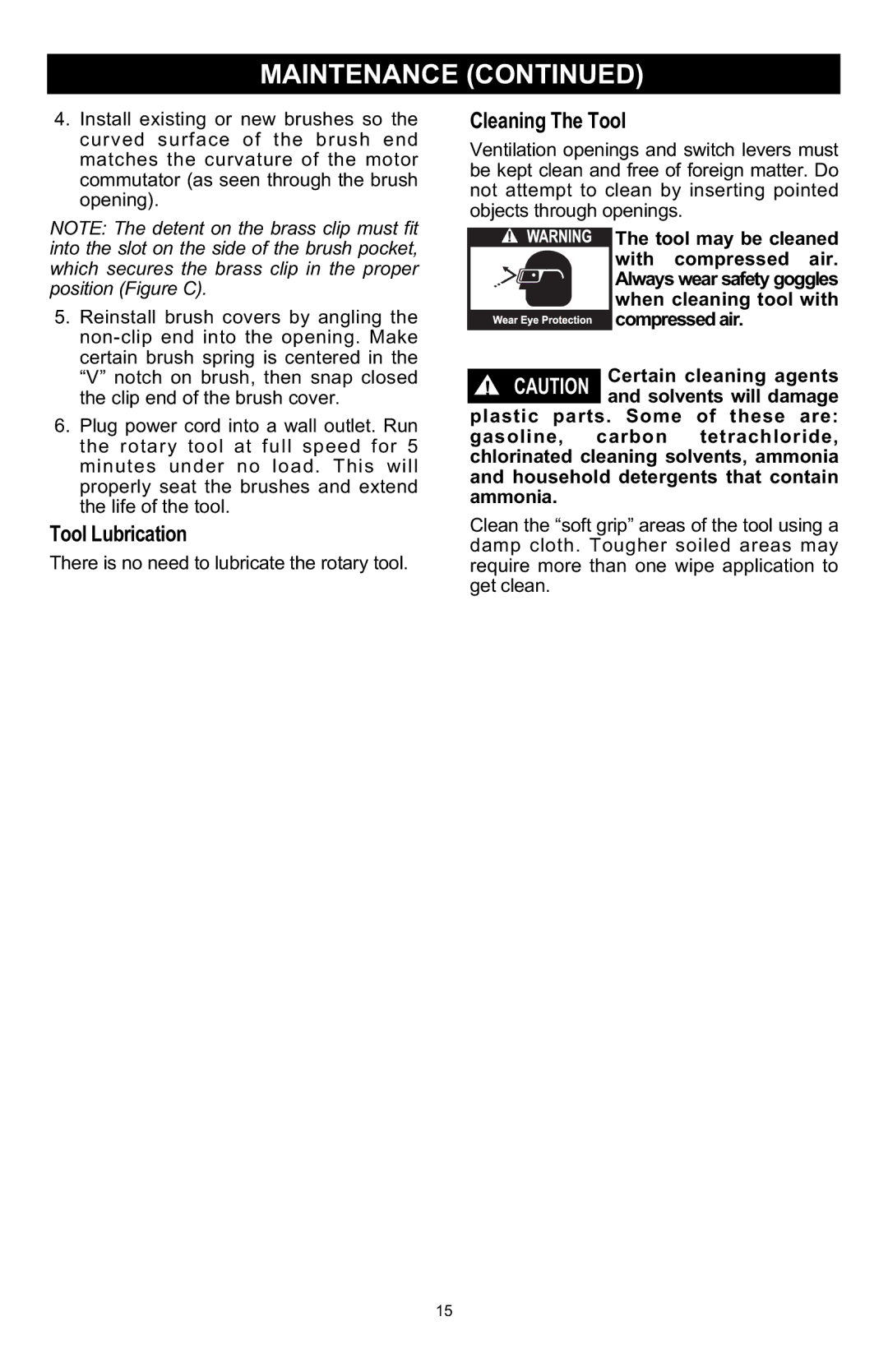
MAINTENANCE (CONTINUED)
4. Install existing or new brushes so the | Cleaning The Tool |
| ||||
curved surface of the brush end | Ventilation openings and switch levers must | |||||
matches the curvature of the motor | be kept clean and free of foreign matter. Do | |||||
commutator (as seen through the brush | not attempt to clean by inserting pointed | |||||
opening). | objects through openings. | |||||
NOTE: The detent on the brass clip must fit |
|
|
| The tool may be cleaned | ||
|
|
| ||||
into the slot on the side of the brush pocket, |
|
|
| with | compressed air. | |
which secures the brass clip in the proper |
|
|
| Always wear safety goggles | ||
position (Figure C). |
|
|
| when cleaning tool with | ||
5. Reinstall brush covers by angling the |
|
|
| compressed air. | ||
|
|
| ||||
|
|
| ||||
|
|
| ||||
certain brush spring is centered in the |
|
| Certain cleaning agents | |||
“V” notch on brush, then snap closed |
|
| ||||
! | CAUTION | |||||
the clip end of the brush cover. | and solvents will damage | |||||
6. Plug power cord into a wall outlet. Run | plastic parts. Some of these are: | |||||
the rotary tool at full speed for 5 | gasoline, | carbon | tetrachloride, | |||
minutes under no load. This will | chlorinated cleaning solvents, ammonia | |||||
properly seat the brushes and extend | and household detergents that contain | |||||
the life of the tool. | ammonia. |
|
|
| ||
Tool Lubrication | Clean the “soft grip” areas of the tool using a | |||||
damp cloth. Tougher soiled areas may | ||||||
There is no need to lubricate the rotary tool. | require more than one wipe application to | |||||
| get clean. |
|
|
| ||
15
